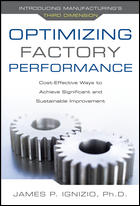Speaking of Quality
What Does (Cost of) Quality Mean?
Many of the terms used to define cost of quality are incorrect.

In 2011, Sipho Tjabadi, general manager, Eskom Quality Management, South Africa, spoke at the ASQ Audit Division Conference. To punctuate his keynote address, Tjabadi brought a video titled, “The Cost of Quality.” For seven minutes the audience was transfixed while several quality failures were presented, root causes offered, and total cost in materials (and, too often, life) were calculated on screen. After the conference the video was posted to the Audit Division website, where it continues to be a popular page.
The video powerfully illustrates cost of quality. But what does cost of quality really mean? To answer the question, let’s take a step back. Define quality. Take a moment to ponder.
A visit to Dictionary.com will bring us to the following list:
qual·i·ty (kwoliti)
- an essential or distinctive characteristic, property, or attribute: the chemical qualities of alcohol.
- character or nature, as belonging to or distinguishing a thing: the quality of a sound.
- character with respect to fineness, or grade of excellence: food of poor quality; silks of fine quality.
- high grade; superiority; excellence: wood grain
- of quality.
- a personality or character trait: kindness is one of her many good qualities.
Character. Nature. Excellence. Did any of these terms appear in your definition of quality? While most of us can identify what a quality product or service is, it is often more difficult to convey that to someone else. How many times have you—as a quality professional—when a person asks you what quality is, allowed the asker to supply the answer and then filled in the gaps? That’s fairly common with ASQ members. In fact, in recent informal polls on ASQ social media, when asked “what is quality?” a number of visitors answered “whatever the customer says it is.”
The customer will generally relate quality to the way in which a product works. While a good starting point, quality is not only what a product is but also what a methodology or tool does. This is certainly the way a quality professional must think. Stating what quality “does for me” is not only a way of explaining to family, neighbors and co-workers but a means of justifying its importance to senior management.
So, where are we in our quest to define quality? Quality is:
- Waste reduction
- Continuous improvement (which might include process improvement)
- Performance excellence (there’s that word excellence)
- Product safety
- Service delivery
- Exceeding customer expectations
Depending on what you are trying to do, quality will mean something different to you.
With quality more or less defined, we can finally turn to cost of quality. With the multiple quality definitions in circulation, it is no wonder cost of quality is defined in different ways. Unlike the definition of quality, however, many of the terms used to define cost of quality are incorrect.
What Is Cost of Quality?
Cost of quality is often thought of as the price of creating a quality product. While on the surface this appears to make sense, this definition is absolutely incorrect.
In actuality, the cost of quality is the cost of NOT creating a quality product or service. What is the difference? The former (incorrect) definition covers product/service costs only. Cost of quality covers any cost that would not have been expended if quality were perfect.
In 1999, ASQ Quality Costs Committee
published the third edition of “Principles of Quality Costs: Principles, Implementation, and Use” (ed.
Jack Campanella, ASQ Quality Press), beginning
the book with references to costs associated
with quality.
- Prevention Costs—The costs of activities specifically designed to prevent poor quality in products or services.
- Appraisal Costs—The costs associated with measuring, evaluating, or auditing products or services to ensure conformance to quality standards and performance requirements.
- Failure Costs—The costs resulting from products or services not conforming to requirements or customer/user needs. Failure costs are divided into internal and external failure categories.
- Internal Failure Costs—Failure costs occurring prior to delivery or shipment of the product, or the furnishing of a service, to the customer.
- External Failure Costs—Failure costs occurring after delivery or shipment of the product —and during or after furnishing of a service—to the customer.
- Total Quality Costs—The sum of the above costs. This represents the difference between the actual cost of a product or service and what the reduced cost would be if there were no possibility of substandard service, failure of products, or defects in their manufacture.
Yes, this is a daunting list of costs. But quality is essential. There is a cost to attaining and improving quality, but there is a bigger cost in failing to produce quality work. Don’t allow a definition to get in the way of your work. You know what quality is. Achieve it!
You can find more about cost of quality, including free articles and case studies, at http://asq.org/cost-of-quality/index.html.
Looking for a reprint of this article?
From high-res PDFs to custom plaques, order your copy today!







